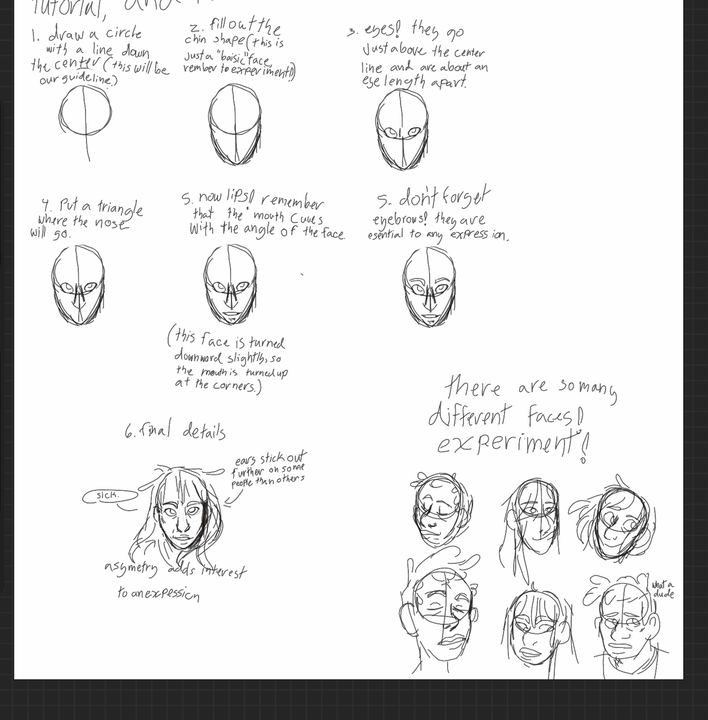Teach us how to draw something cool
Draw a cool comic-style superhero step-by-step, learning simple shapes, proportions, shading, and coloring to create your own unique character design.


Step-by-step guide to draw a comic-style superhero
How to Draw a Cartoon People - for Beginners
Step 1
Clear a flat workspace and lay out your materials where you can reach them easily.
Step 2
Lightly draw a simple stick-figure pose to decide how your superhero will stand or move.
Step 3
Block in basic shapes over the stick figure by drawing a circle for the head an oval or rectangle for the chest and a trapezoid for the hips.
Step 4
Adjust the proportions so the head is about one sixth of the total height and the chest is bigger than the waist.
Step 5
Sketch the arms legs and hands using smooth shapes and add circles for shoulders and knees to keep the joints clear.
Step 6
Design a fun costume by drawing a bold emblem on the chest and simple lines for gloves boots and a belt.
Step 7
Draw the face hair and mask details to give your hero personality with big expressive eyes or a strong jawline.
Step 8
Trace over your favorite pencil lines carefully with the black marker to make the final outlines.
Step 9
Wait a moment for the ink to dry then gently erase the remaining pencil lines with the eraser.
Step 10
Add simple shading with short parallel lines or soft strokes to show depth on the cape chest and areas away from the light.
Step 11
Choose a color palette and fill in the base colors neatly using your coloring materials.
Step 12
Add deeper colors for shadows and leave small white areas or lightly color them for highlights to make your hero pop.
Step 13
Share your finished comic style superhero design on DIY.org
Final steps
You're almost there! Complete all the steps, bring your creation to life, post it, and conquer the challenge!


Help!?
What can I use if I don't have a black marker or special coloring materials?
If you don't have a black marker for the tracing step, use a dark gel pen, fine permanent marker, or even a dark colored pencil, and substitute colored pencils or crayons when the instructions ask you to fill in base colors.
My drawing looks off—how do I fix proportions or smudging during the tracing and erasing steps?
If the head or chest seem wrong, lightly measure the head to be about one sixth of the total height and adjust the chest and waist shapes with your pencil before tracing, and to avoid smudging test your black marker on scrap paper and wait for the ink to dry fully before erasing remaining pencil lines.
How can I adapt the steps for different ages or skill levels?
For younger kids, simplify by pre-drawing the stick-figure and basic shapes and giving them chunky markers to fill colors, while older kids can refine proportions, add detailed face and hair, and practice shading with short parallel lines and layered color for shadows.
How can we extend or personalize the superhero after finishing the basic drawing?
Make the hero unique by designing a bold emblem on the chest, adding a background with action lines and extra shading for depth, experiment with a custom color palette for highlights and shadows, and then photograph or scan the finished piece to share on DIY.org.
Watch videos on how to draw a comic-style superhero
How to draw a cartoon character 😀 step by step drawing for beginners 😉
Facts about drawing fundamentals and character design
✍️ Jack Kirby, nicknamed "The King of Comics," co-created many iconic heroes and popularized dynamic, larger-than-life poses.
🎨 Colorists often use complementary colors (like blue and orange) to make characters leap off the page.
🧭 Comic artists commonly draw heroic figures about 8 heads tall—shrinking the head slightly makes the body read as more powerful.
📚 The term "comic book" grew out of humorous newspaper strips, but comics now span every genre from superheroes to memoirs.
🦸♂️ Superman first appeared in Action Comics #1 in 1938 and helped kick-start the modern superhero age.
How do I teach a child to draw a comic-style superhero step by step?
What materials do I need to draw a comic-style superhero with my child?
What ages is drawing a comic-style superhero suitable for?
What are the benefits and fun variations of drawing comic superheroes?


One subscription, many ways to play and learn.
Only $6.99 after trial. No credit card required



